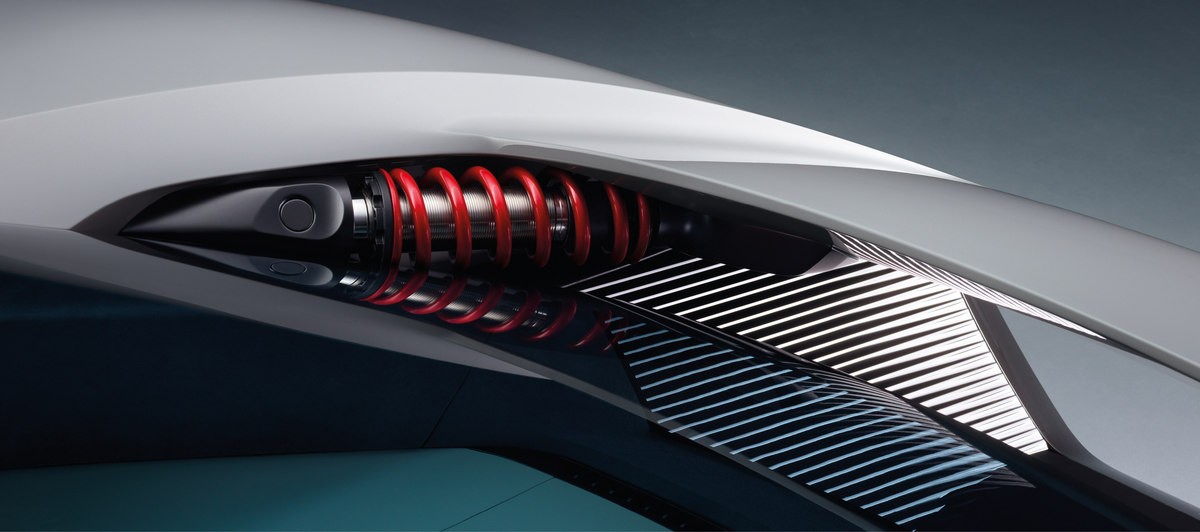
The next level of electrifying Driving
The Audi PB18 e-tron is the vision of a radical super sports car for an authentic driving experience. The concept car illustrates just how exhilarating the future of electric driving can be.
Angus Frazer (copy) & Robert Grischek (photo), RECOM (postproduktion)

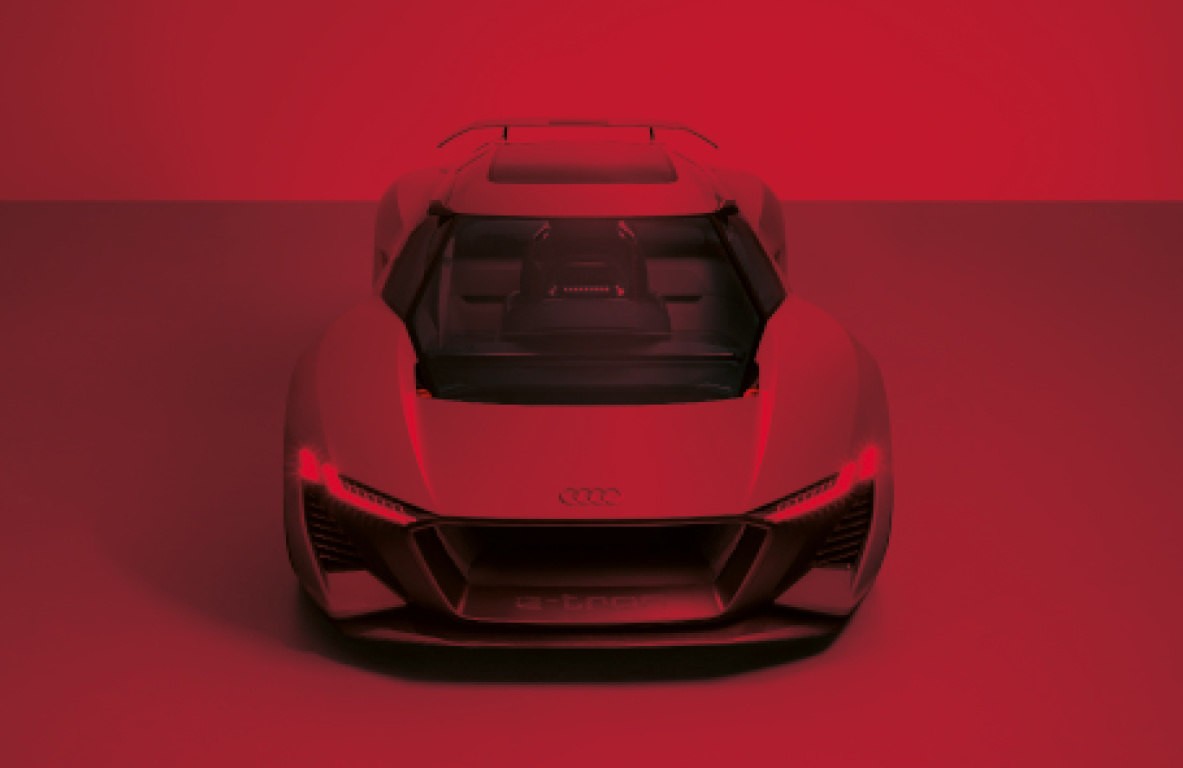
If you could travel in time, where would you go? And, more importantly, what time would you travel to? I would love to visit the past. Admittedly, that’s a little embarrassing, given that in my role as a journalist I should be drawn to the new and unfamiliar. But wouldn’t it be fascinating to watch Michelangelo paint the ceiling of the Sistine Chapel and listen to the first performance of Johann Pachelbel’s Canon in D Major? More than anything, though, I would love to take in a couple of motorsports milestones. Austria in 1914 would be my first stop, so I could cheer on Audi founder August Horch as he won the Alpine Rally in his Audi Type C. Or perhaps the Nürburgring in the 1930s, to see Bernd Rosemeyer at the wheel of a thunderous Auto Union Type C. But my top pick would be a short hop just 34 years into the past, to the 1984 Ulster Rally, when Audi brought the short-wheelbase Group B Sport quattro rally car to the UK. No one there had ever seen anything quite like it. The pace at which Walter Röhrl’s yellow car tore through the Ulster countryside day and night was brutal. “I’m just here for testing, nothing else,” Röhrl explained. “And for a proper test, I pull out all the stops. I don’t try to go easy on the car—I go flat out all the way.” The car flew along so fast that navigator Christian Geistdörfer had to take a red pen to the pace notes he was using because there simply wasn’t time to read them all. Röhrl’s antics behind the wheel filled me with sheer joy. Young and naive as I was at the time, I thought that, given half a chance, I could drive a rally car the same way. Today, series-production autonomous cars are closer than ever to becoming a reality, but back then, the idea was impossibly futuristic. The only supercomputer in the Audi Sport quattro rally car was Walter Röhrl’s brain. It was one hundred percent human skill at work, with zero driver assistance technology.
Maybe on the way back to the present, I could stop off at Le Mans in 2013. What a thrill it would be to revisit the Audi Sport mechanics poising themselves for the imminent arrival of the Audi R18 e-tron quattro in the pit, then the frisson of energy as they refueled the car and changed the tires, and drivers Allan McNish and Tom Kristensen exchanged places behind the wheel at lightning speed.
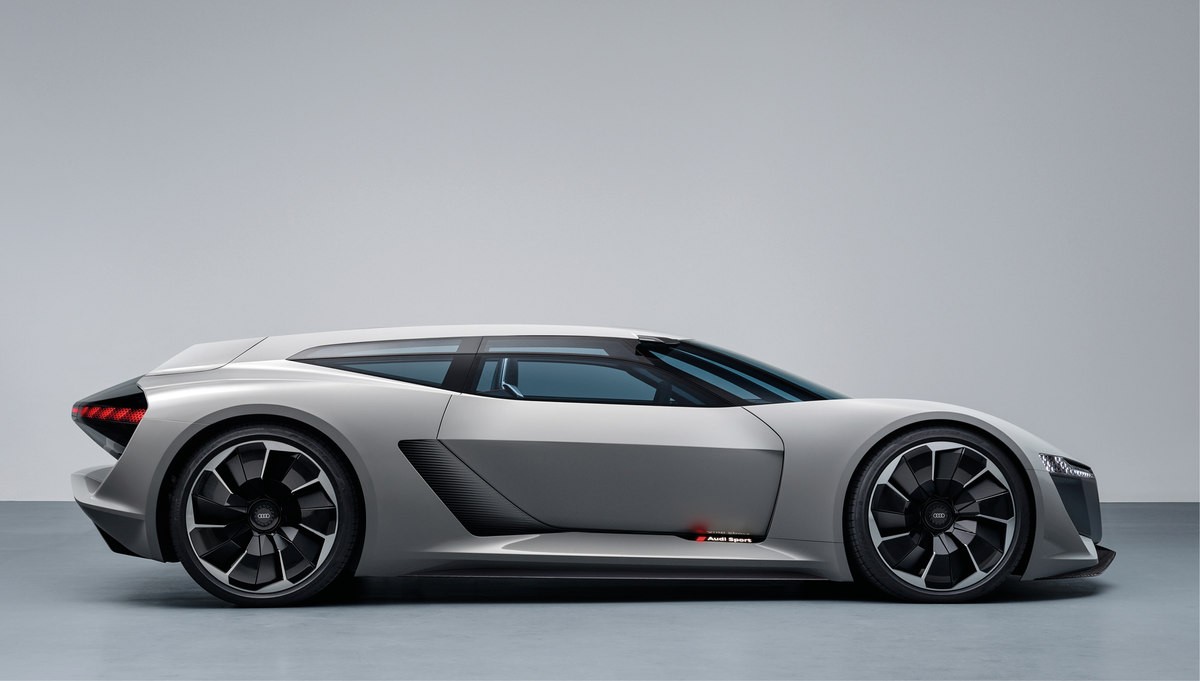
The Audi PB18 e-tron is 4.53 meters long, two meters wide and just 1.15 meters high. These dimensions alone speak of a classic sports car. Its wheelbase is 2.70 meters and its overhangs are compact. From the side view, the gently sloping roof line which is pulled far to the back and features massive C-pillars dominates.
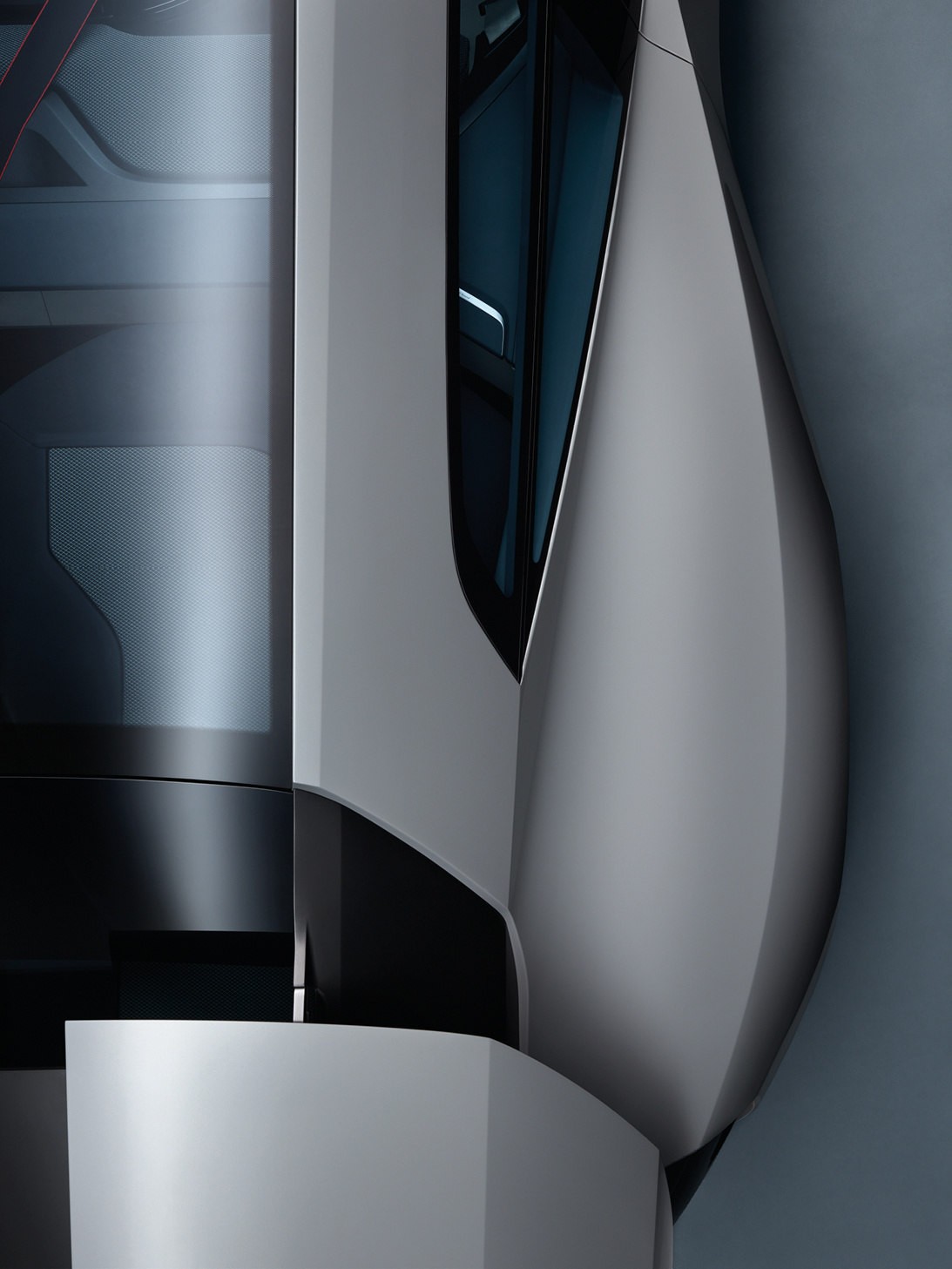
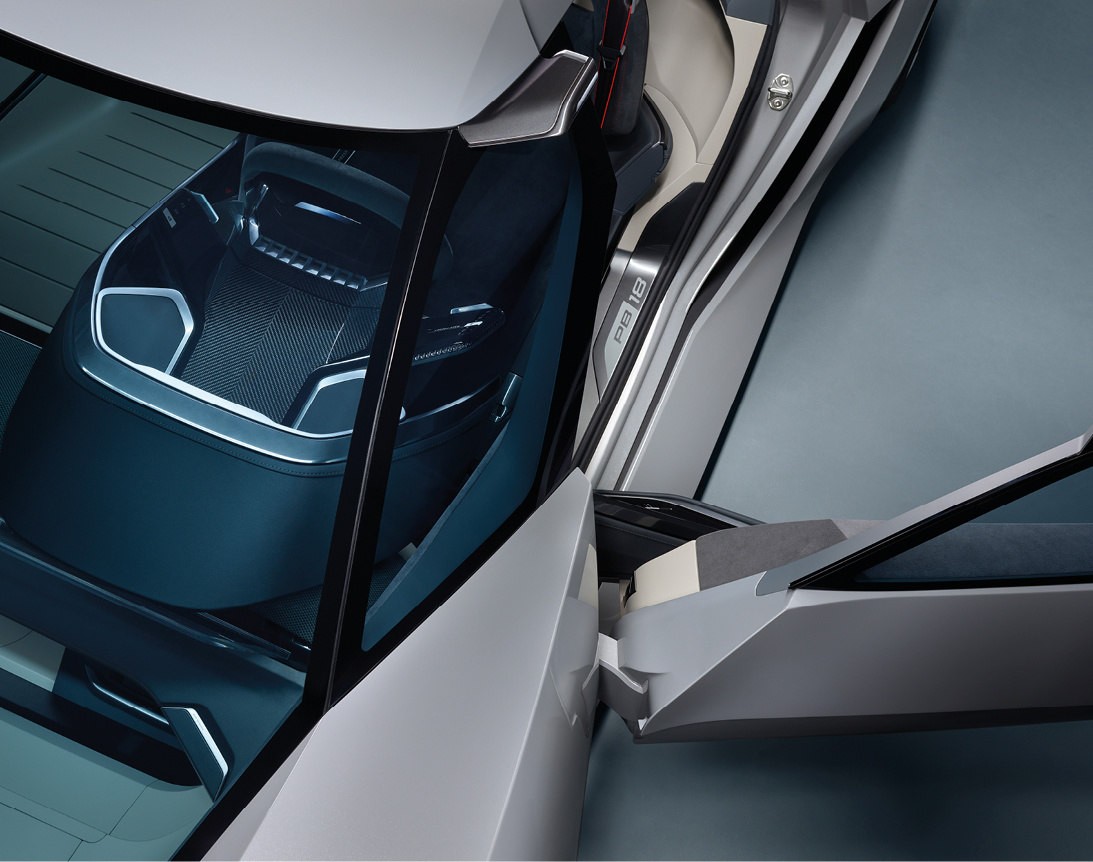
The driver’s seat and cockpit are integrated into an inner monocoque shell that can be slid laterally. It can be positioned in the center of the interior as in a monoposto. This is possible thanks to the by-wire design of the steering and pedals. So no mechanical connection of the control elements is needed.
AN INNOVATIVE PATH TO FLEXIBILITY.
When I witnessed that, I was a little older and wiser—at least wise enough to realize that I would never be a racing driver. Yet when we grasp the steering wheel, we can all still dream. And also dream of a car like this. A car capable of evoking the Four Rings’ past sporting glories, particularly those Le Mans wins. And at the same time signposting the way toward the future of Audi, or at least a significant part of that future. The car in question is the Audi PB18 e-tron, the concept car created by Audi Sport GmbH and unveiled at this summer’s Pebble Beach Automotive Week in Monterey, California. The designation PB18 e-tron refers both to the Pebble Beach venue and to the technological DNA the newcomer shares with the LMP1 Audi R18 e-tron quattro that gave Audi the final three of its 13 Le Mans wins. Indeed, you might be forgiven for thinking that Audi was about to announce a World Endurance Championship comeback with this car. With its broad, flat, wind-tunnel-inspired nose and its cab positioned far forward in traditional mid-engine sports car style, all the Audi PB18 e-tron seems to lack are some numbers on the door and it would be all set for Le Mans in 2019. In fact, this radical machine is just as suitable for the road as for the track. With its gently sloping roofline pulled far to the back and massive C-pillars, plus a large, almost vertical rear window, the Audi PB18 e-tron is an ultra-modern take on the classic Shooting Brake Concept. Part coupé, part station wagon, it offers adequate space to accommodate cargo for a driver and a passenger—even for grand turismo-style journeys that call for more than a helmet and racing overalls. If you were to place the Audi PB18 e-tron at the end of a line including the Audi R18 e-tron quattro Le Mans car, the Audi Sport quattro rally car, the Auto Union pre-war racer and the 1914 Audi Type C, you would immediately notice one thing they have in common: In their overall concepts, they all somehow exceed the sum of their parts—the materials and knowledge available at the time of their design—to become something truly epic. I am quite sure that all of the Audi engineers through the ages would take the chance to travel into the future. So it’s no surprise that the Audi PB18 e-tron uses a power source that is perfectly suited to the very near future: Three powerful electric motors, one at the front and two at the rear, deliver phenomenal performance, with power distribution that is quintessentially quattro.

A new perspective: Thanks to the switch to the center position, the driver—looking through the large windshield from the low seating angle—can see precisely into the opening of the ventilated hood and right onto the track. And can thus perfectly target the course and apex of the curve. Mounted within this field of vision is a transparent OLED surface. The ideal line of the next curve can be shown on it, precisely controlled with data from navigation and vehicle electronics.
EXPERTISE DRAWN FROM MOTORSPORT.
The Audi PB18 e-tron’s torque output and acceleration are a close second to those of a current Le Mans LMP1 prototype. That’s the sort of performance that would transform even a diehard motorhead into a true blue volt fan—which in fact is one of its key missions. Gael Buzyn, Head of the Audi Design Loft in Malibu, where the car was styled, explains: “We want to offer the driver an experience that is otherwise available only in a racing car like the Audi R18 e-tron quattro. That’s why we developed the interior around the ideal driver’s position in the center. Nevertheless, our aim was to also give the Audi PB18 e-tron a high degree of everyday usability, excitement and driving pleasure—not just for the driver, but also for a potential passenger.” Two of Buzyn’s words in particular are music to any sports car lover’s ears: driving pleasure. Just like all its great predecessors that sport the four rings, the Audi PB18 e-tron has a steering wheel. In 2018, that’s not a given. Take the Audi Aicon, for example: With the steering wheel and pedals absent, the fully autonomous concept car is the perfect solution for long distance, high-luxury, zero-emission travel, where you can kick back, read a book, watch a movie or even sleep. The Audi PB18 e-tron shares its electric motor, and much of its design idiom, with the Audi Aicon. But in the Audi PB18 e-tron, the focus is squarely on the driver—that's you—in the driver’s seat, hands on the wheel.
The very first Audi Type C proved highly advanced for its time, as its mastery of the Alpine Rally unambiguously demonstrated. But it’s vital to remember that August Horch was not just a fine engineer; he was also an excellent driver. Or consider the Auto Union Type C: Despite its monstrous power and clear dominance over challengers, it nonetheless took the skill and bravery of Bernd Rosemeyer to secure victory. The Audi Sport quattro was possibly the most powerful rally car ever to compete, which makes the lightning fast reactions of drivers such as Walter Röhrl all the more impressive. While it’s clear that Audi engineered the best Le Mans race cars—they had to be to lead the field time and time again right around the clock in the world’s most grueling race—we should remember that Ingolstadt also signed up the very best drivers.
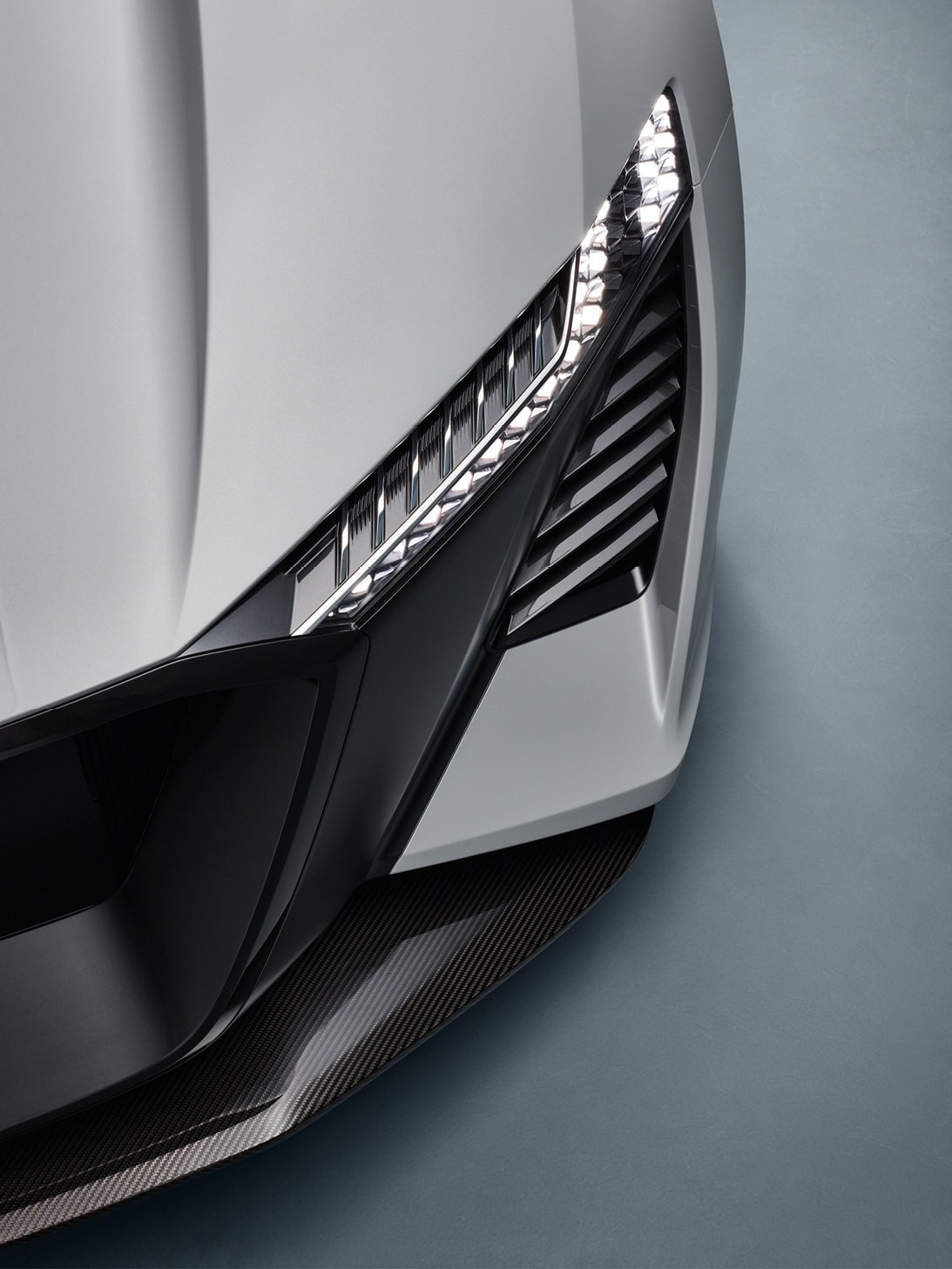
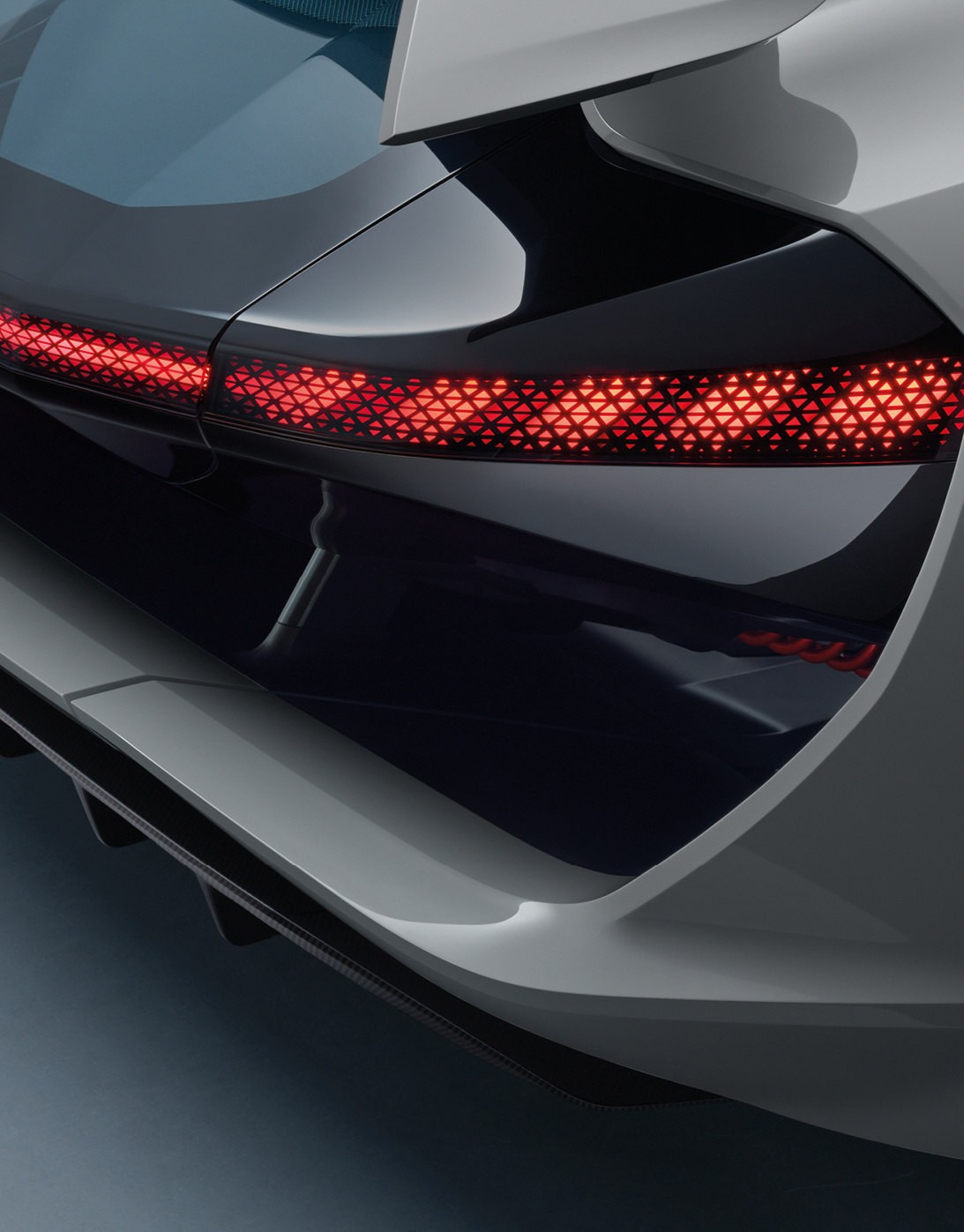
A flat red band of lights extends across the entire width of the rear and underscores the horizontal orientation of the vehicle body. At the front, wide and flat light units with integrated digital matrix technology and laser high-beam headlights complete the face of the Audi PB18 e-tron. Another detail especially emblematic of the transfer of know-how from various disciplines that went into this concept car’s development: The laser high-beam headlight with its enormous range made its debut in the Le Mans Audi R18 e-tron quattro. Maximum light output is a crucial safety advantage at high speeds.
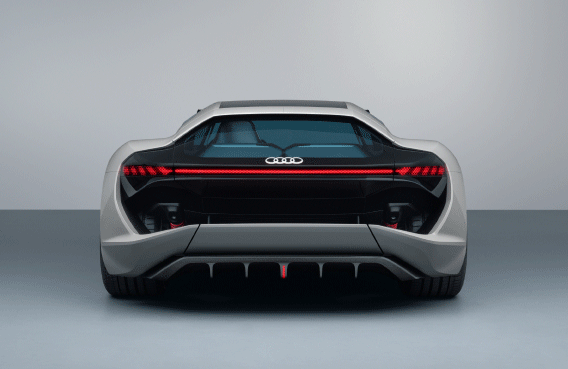
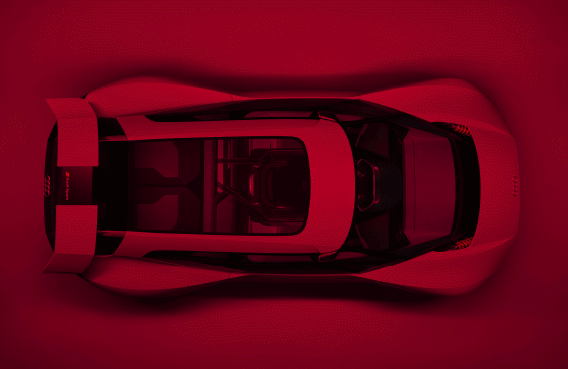
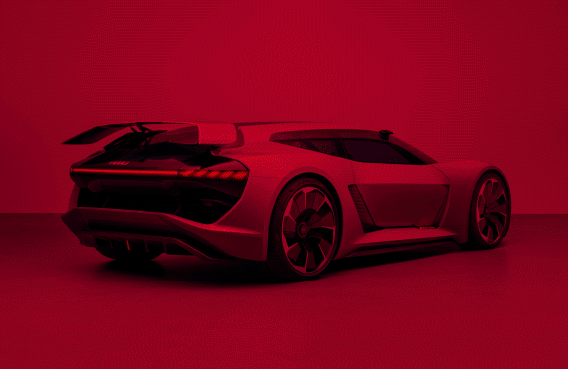
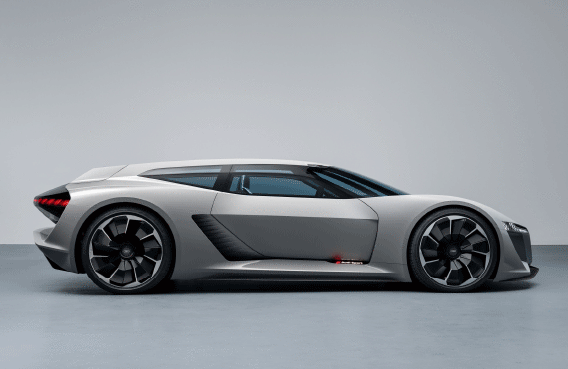
For air flow, the hood dips deeply and acts as a lateral bridge running across the nose, connecting the two emphatically accentuated fenders and also doubling as an air deflector. This is yet another detail thoroughly familiar from racing.

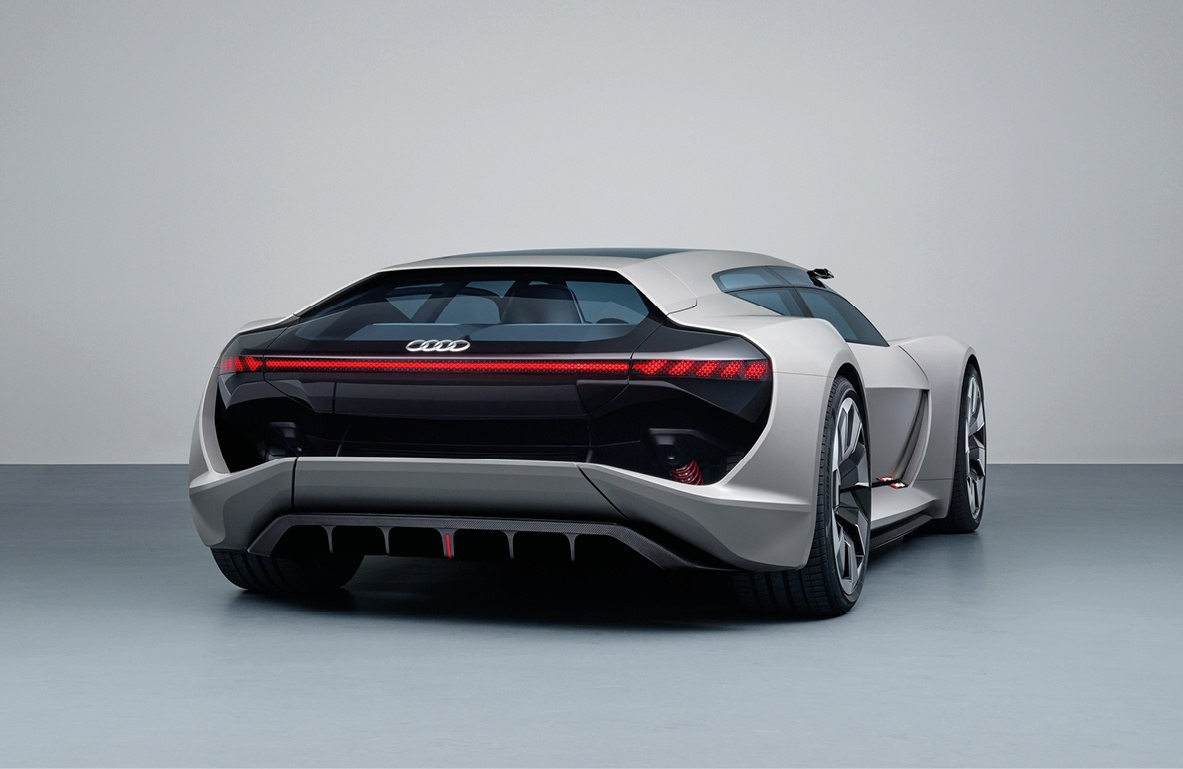
The widely extended wheel arches located opposite the central cabin are noticeable from every angle. They emphasize the extremely wide track of the Audi PB18 e-tron, illustrating the lateral dynamic potential of the car and the quattro all-wheel drive.
Without pilots like Tom Kristensen, whose record of nine Le Mans wins is unlikely ever to be broken, these victories would not have been possible. When you go beyond the conventional and design powerful cars, and then put consummate skill behind the steering wheel, that’s when the magic happens: machine and man, or machine and woman, in complete harmony. With the Audi PB18 e-tron, the brand with the four rings has removed the influence of driver assistance systems from the driving experience. The engineers’ commitment to this can be seen in the project’s internal working title, Level Zero, which explicitly differentiates it from the Levels 3, 4 and 5 of autonomous driving currently in focus at Audi. And then, to ensure that the driver would retain complete control, they went even further: The driver’s seat and the cockpit can be moved sideways and fixed in the center of the car, thus creating the ideal position for the ultimate track driving experience. After all, the car takes its basic suspension architecture from that Le Mans classic, the Audi R18 e-tron quattro. Can you imagine the level of grip you’d get by taking it to the max on a corner? Or how precise the steering response would feel in your hands? No? Neither can I. Only a handful of people on the planet possibly could, and they all wore the red and white Audi Sport racing overalls at Le Mans.
So one final question remains: What would you do if you could have one last journey in time? Having had my kicks traveling back, I would have to go forward. But how far? Maybe to 2080? By then, we might have colonies on the moon. Or to 2120, when it might even be possible to travel to Mars? No, I’d be fine with a lot less. I’d set the dial to 2021. That’s the year (I hope) the electrifying Audi PB18 e-tron (fingers crossed) may go into series production.